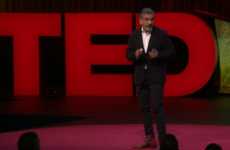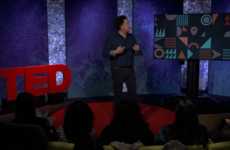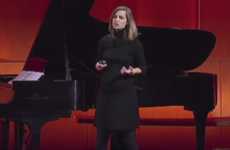
Need Inspiration?
Get inspired by 4,000+ keynote speaker videos & our founder, a top keynote speaker on innovation.
Rahul Mehrotra's Keynote on Temporary Architecture Calls for a Change of Ways
Kalin Ned — July 23, 2019 — Keynote Trends
References: rmaarchitects & ted
A riveting keynote on temporary architecture is delivered by Rahul Mehrotra — an architect and an educator who focuses on the dynamics of urbanism and thinks along the lines of sustainability. His talk is rooted in "lessons about how to touch the ground lightly, about reversibility, [and] about disassembly."
In the beginning, Mehrotra brings up the "ephemeral megacity" and extends the concept into contemporary building practices in traditional urban areas. The example he gives is that of Kumbh Mela — a temporary settlement that occurs every 12 years in India. As a religious Hindu festival, the event takes place at the confluence of the Ganges and the Yamuna rivers. It brings together 100 million people. Mehrotra uses this as ammunition for his keynote on temporary architecture. The megacity — which can house about seven million, "replicates all forms of physical, as well as social, infrastructure." From water supply and electricity to a grid layout and hospitals, Kumbh Mela has its own governance system, as well.
The materials used to build the temporary settlement are flexible and the method of construction allows festival-goers to not leave a mark on the land upon departure. With no foundations, people build structures out of fabric. The architect identifies the five materials that are used to create the environment — "eight-foot-tall bamboo, string or rope, nails or screw, and a skinning material."
During his keynote on temporary architecture, Rahul Mehrotra holds that adaptability, the allotment of change and the art of disassembly play a crucial role in contemporary times. According to him, urbanism should be viewed as "an elastic condition" and city infrastructure should be focused on satisfying the aforementioned values as a means of reducing climate change and preserving resources. As of right now, the educator holds that "as humans, [we are] obsessed with permanence" and we offer "permanent solutions for temporary problems."
The takeaway from Rahul Mehrotra's keynote on temporary architecture is that we need to radically change our perception. We need to focus on the "temporal, the reversible, the disassemblable" environment.
In the beginning, Mehrotra brings up the "ephemeral megacity" and extends the concept into contemporary building practices in traditional urban areas. The example he gives is that of Kumbh Mela — a temporary settlement that occurs every 12 years in India. As a religious Hindu festival, the event takes place at the confluence of the Ganges and the Yamuna rivers. It brings together 100 million people. Mehrotra uses this as ammunition for his keynote on temporary architecture. The megacity — which can house about seven million, "replicates all forms of physical, as well as social, infrastructure." From water supply and electricity to a grid layout and hospitals, Kumbh Mela has its own governance system, as well.
The materials used to build the temporary settlement are flexible and the method of construction allows festival-goers to not leave a mark on the land upon departure. With no foundations, people build structures out of fabric. The architect identifies the five materials that are used to create the environment — "eight-foot-tall bamboo, string or rope, nails or screw, and a skinning material."
During his keynote on temporary architecture, Rahul Mehrotra holds that adaptability, the allotment of change and the art of disassembly play a crucial role in contemporary times. According to him, urbanism should be viewed as "an elastic condition" and city infrastructure should be focused on satisfying the aforementioned values as a means of reducing climate change and preserving resources. As of right now, the educator holds that "as humans, [we are] obsessed with permanence" and we offer "permanent solutions for temporary problems."
The takeaway from Rahul Mehrotra's keynote on temporary architecture is that we need to radically change our perception. We need to focus on the "temporal, the reversible, the disassemblable" environment.
1.5
Score
Popularity
Activity
Freshness
















